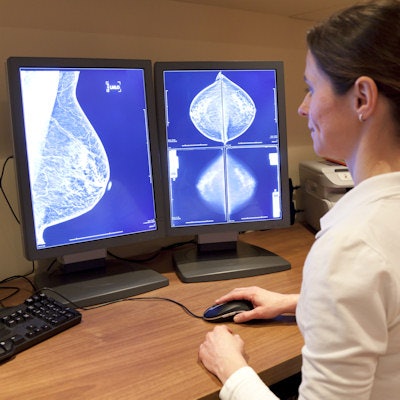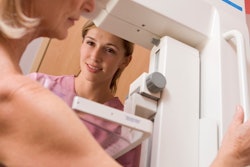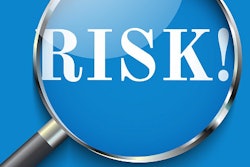
Many women want to learn about their risk status for breast cancer from a face-to-face meeting with the radiologist who interpreted their screening mammograms, according to the findings of a study published on May 3 in Academic Radiology.
The study included the responses of more than 600 women who visited one of eight Massachusetts mammography centers for their regular screening. The desire to learn about their risk status from a radiologist was one of the top survey responses, regardless of whether the participants had an average or high risk of developing breast cancer in a hypothetical scenario.
"As an increasing number of breast imaging facilities incorporate risk assessment into their screening mammography routine, radiologists now have an opportunity to communicate estimated breast cancer risk with patients," wrote the authors, led by Dr. Nita Amornsiripanitch from the University of Massachusetts Medical School.
The American Cancer Society recommends supplemental breast MRI screening for women who have an increased average risk of breast cancer. Yet many women, including high-risk women, don't know their breast cancer risk status.
The authors asked a diverse group of women how they would like to receive information about their breast cancer risk status using a 21-question survey. The vast majority (87%) of the 683 survey respondents said they were interested in knowing their lifetime risk of breast cancer.
The few who didn't want to know their risk status gave reasons such as already having a personal history of breast cancer, being older in age, or not having a family history of breast cancer. Women with a household income of less than $20,000 were also less interested in knowing their risk status than those with an income of $40,001 to $65,000 after the authors adjusted for confounding factors.
In a hypothetical scenario where the participants had an average risk of breast cancer, 57% of respondents said they'd like a letter accompanying their annual mammogram results. Another 34% said they'd like to meet face-to-face with the radiologist interpreting the results, and 30% wanted a face-to-face meeting with the referring provider.
When asked how they'd like to receive information about their risk status if they had an elevated risk of developing breast cancer, 43% of respondents said they'd like a face-to-face meeting with the radiologist, and the same percentage of respondents said they'd want a letter in the mail.
If the women could only choose one communication method in each scenario, more women chose to receive a letter if they had an average risk of breast cancer, but they preferred a face-to-face meeting with a radiologist or other provider if they had an elevated risk of breast cancer.
The authors also asked the women what level of detail they'd like to know about their risk status. In the average-risk scenario, 57% of respondents said they'd want to receive very detailed information. That statistic rose to 80% of respondents for the high-risk scenario.
After controlling for confounding factors, such as age, income, education, and personal breast cancer history, the authors found non-Hispanic African American women were the only race/ethnicity to prefer less detailed information in the high-risk scenario than the average-risk one. However, non-Hispanic African American women were also underrepresented in the study, they noted.
"Further research is needed to confirm whether increased access to breast cancer risk assessment would increase appropriate use of supplemental screening modalities, adherence to risk reduction strategies, and ultimately, early cancer detection," the authors wrote. "However, as the trend toward performing risk assessment at time of screening mammography continues, it is critical that radiologists are conscientious of vulnerable populations and their preferences for receiving risk assessment results in order to provide patient-centered care to all women."



















